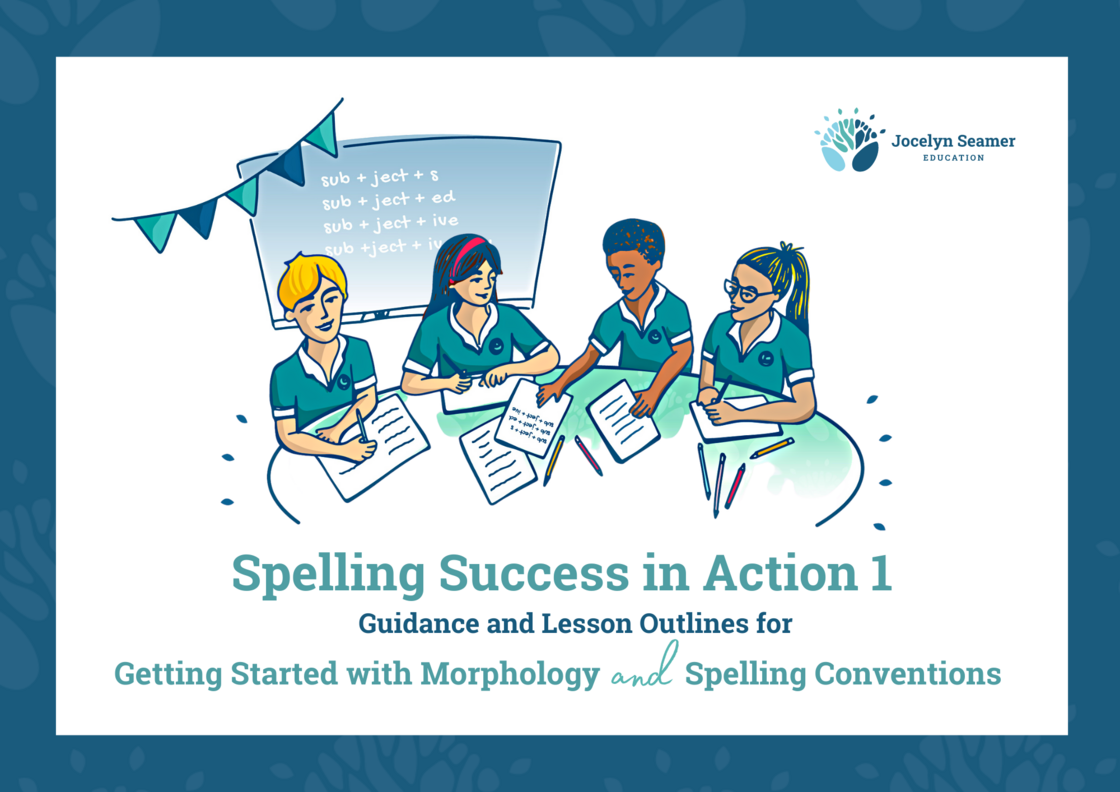S1 E14 - When should we start morphology instruction and what might it look like?

Transcript Summary
Some people think that morphology should be taught from day one of foundation. They tend to think that people should only be exploring words and phoneme-grapheme correspondences through the exploration of morphology and that phonics shouldn't be taught in a systematic structured way as we do in systematic synthetic phonics.
Other people think that morphology should not be touched until after students have the full alphabetic code under their belt, and I tend to not be quite in alignment with either of these ideas. Rather, I think that we can consider the role of phonics and morphology from the perspective of what students need at different points in their reading and spelling development.
English is a morphophonemic language, and that means that it is as influenced by morphemes as it is by graphemes or phonics. If we only teach students about phonics, we're only giving them a small part of the picture about how our language works. But we can't teach all of phonics and all of morphology at once. That does not fit with our structured literacy principle of starting things simply and building complexity over time.
A morpheme is the smallest unit of meaning in a word. Bases are morphemes. The base is that main part of the word that we build upon. There are two sorts of bases. A free base can exist on its own (the word 'help' is a free base,) but a bound base must be connected to a prefix or a suffix, and an example of this is 'cred'.
To the base, whether it be a free base or a bound base, we can add prefixes and suffixes. Sometimes there is more than one prefix, sometimes, there's more than one suffix. Different words have different complexities.

It's really important to know that children come to school with a well-developed ability to use morphemes in their speech. These morphological skills are already in existence for them. They use various forms of words like play, playing, played, and they combine word parts in fun ways. So they might say something like he was running quicklier. Now that's not a correct word in that we can find it in the dictionary, but you can see how this child's taken quick quickly, quicker and put them together and made quicklier.
Morphology helps us understand the parts of how words work that phonics can't. So where does morphology come in? It comes in when phonics stops explaining the why of how words work. We can introduce the prefix 'un' and the suffixes 'ing' and 's' once students know these phoneme-grapheme correspondences, and they can blend words with four or five phonemes. It's entirely reasonable that you'll be able to introduce these for most children in the Foundation year.
In year one, we're still focusing on the basic code and introducing the complex code. But if we are going to get children to multi-syllable words and take them beyond compound words like sunshine. Morphology is a part of that picture.
There are actually quite a number of morphemes that can take our early years' students a very long way in being able to read a wide range of texts and understand a wide range of vocabulary. These are common prefixes and suffixes such as 'er', as in to draw a comparison (fast, faster). 'Er' can also mean one who does ( farm, farmer). We can have 'est', which is that superlative, meaning the most off. Past tense <ed>. We can put Y on the end of words to create adjectives and ly to create adverbs.
I've also looked at the Australian curriculum because it actually has some things to share with us about what's expected. So in year two, students are expected to build morphemic word families using knowledge of prefixes and suffixes. So that means they can create a list of words. And we are looking here at morphemic word families, not phonics word families. So they can start with the word play. They add ed for played, they add the S for plays, they can add re for replay, and you get the idea.
In year three, students need to understand how to apply knowledge of common base words, prefixes, suffixes, and generalizations. We used to call them rules, now they're referred to as generalizations, and that's just a little more accurate and useful.
They need to be able to read and comprehend new multi-morphemic words. So words with multiple morphemes. They need to take their understanding of the word parts and put them together and figure out, or at least have a really good guess from the words and their knowledge and the context of the sentence, what a word might mean. And our expectations increase from there.
In year four, we're looking at word origins. Again, we're building prefixes and suffixes, and when we get to years five and six, we're working with Latin bases and Greek combining forms, and we are taking that knowledge even further.
Morphology instruction is supported by research and it's important for teachers to understand some of the basics. You can listen to the full episode for the details, but if you are interested in having a look at some papers, you can find links below.
It's great to know that the Australian Curriculum and research support the inclusion of morphology instruction in our schools, but how do we actually make all of that happen? Our Spelling Success in Action Series give you all that you need to get your students on the road to strong spelling and comprehension. You can read more and pre-order your copy of Spelling Success in Actin 1: Getting Started with Morphology and Spelling conventions here.

 Jocelyn Seamer Education
Jocelyn Seamer Education
0 comments
Leave a comment